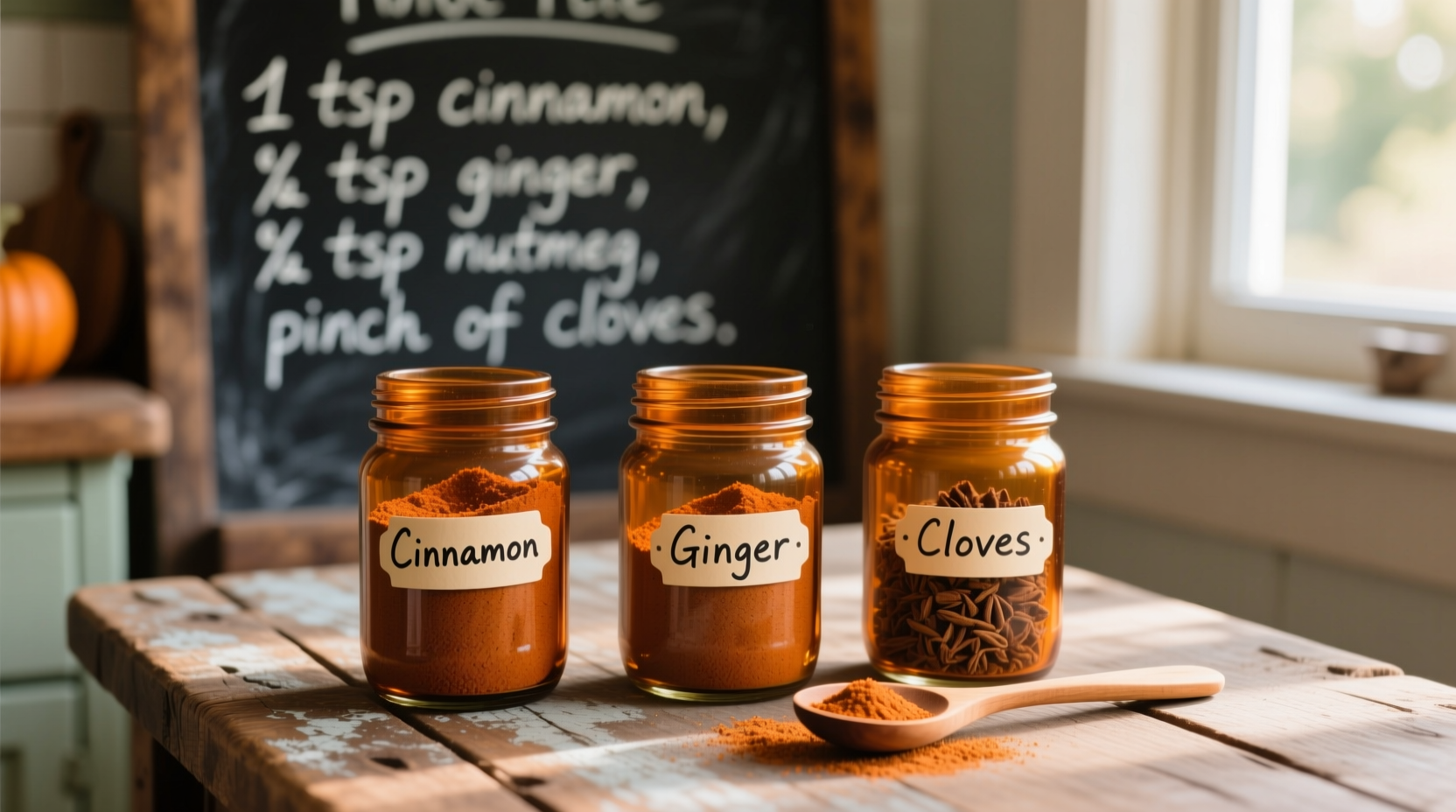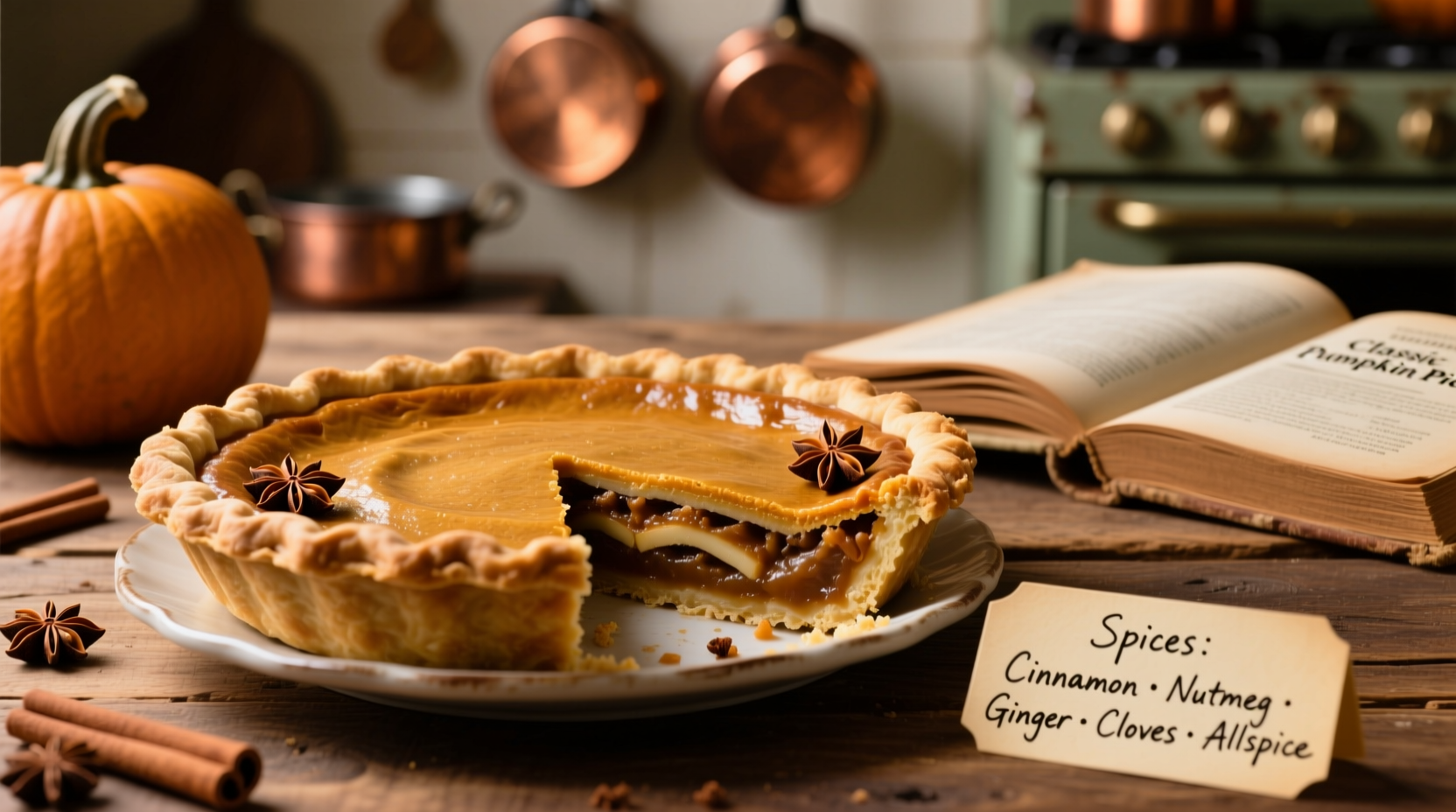The Essential Spice Blend That Defines Pumpkin Pie
When you bite into a perfect slice of pumpkin pie, that distinctive warm, comforting flavor comes from a carefully balanced blend of spices. Understanding these spices isn't just about following a recipe—it's about mastering the foundation of one of America's most beloved desserts.
Why These Specific Spices Work Perfectly with Pumpkin
Pumpkin's mild, slightly sweet flavor needs enhancement to shine in pie form. The traditional spice blend creates a harmonious balance where each component plays a specific role:
- Cinnamon provides the foundational warmth and sweetness
- Ginger adds a bright, slightly spicy counterpoint
- Nutmeg contributes earthy, nutty complexity
- Cloves deliver intense aromatic depth
- Allspice rounds out the blend with notes reminiscent of cinnamon, nutmeg, and cloves combined
Food scientists at the USDA note that these spices contain volatile compounds that interact synergistically with pumpkin's natural sugars during baking, creating new flavor compounds that enhance the overall taste experience (USDA Agricultural Research Service).
Historical Evolution of Pumpkin Pie Spices
The spice blend we associate with pumpkin pie today has evolved significantly over centuries:
| Time Period | Spice Usage | Historical Context |
|---|---|---|
| 1600s-1700s | Expensive imported spices used sparingly | Only wealthy households could afford multiple spices; early "pumpkin pies" were more like custards |
| 1800s | Standardized blend emerges | Amelia Simmons' 1796 cookbook "American Cookery" first documented pumpkin pie with spices |
| 1930s-1950s | "Pumpkin pie spice" commercialized | McCann's introduced pre-mixed pumpkin pie spice, standardizing the ratio |
| Present Day | Traditional blend with modern variations | Chefs experiment with additions like cardamom or black pepper while maintaining core spices |
According to culinary historians at the Food Entomology and Anthropology Trust, the standardization of this spice blend coincided with improved spice trade routes and the industrialization of food production in early 20th century America.
Detailed Breakdown of Each Essential Spice
Cinnamon: The Foundation
True cinnamon (Ceylon cinnamon) versus cassia makes a difference in pumpkin pie. While cassia (the more common variety in North America) has a stronger, spicier flavor, Ceylon cinnamon offers a more delicate, complex sweetness. For pumpkin pie, most bakers prefer cassia for its robust flavor that stands up to baking.
Ginger: The Brightener
Fresh ginger versus ground creates dramatically different results. Ground ginger provides consistent warmth throughout the pie, while fresh ginger adds a brighter, more pronounced zing. Most traditional recipes call for ground ginger for its even distribution and mellow flavor after baking.
Nutmeg: The Secret Weapon
Always use freshly grated nutmeg when possible. Pre-ground nutmeg loses its volatile oils quickly, resulting in a flat flavor. The Food Science Department at Cornell University confirms that freshly grated nutmeg contains up to 30% more aromatic compounds than pre-ground varieties (Cornell Food Science).
Cloves: The Intensifier
Cloves pack a powerful punch—use them sparingly. Too much creates an overwhelming medicinal flavor. The ideal amount provides just enough depth to enhance the other spices without dominating.
Allspice: The Unifier
Despite its name, allspice isn't a blend but a single berry that naturally tastes like a combination of cinnamon, nutmeg, and cloves. It helps unify the other spices, creating a seamless flavor profile rather than distinct spice notes.
Perfect Pumpkin Pie Spice Ratio
Getting the proportions right is crucial. Here's the professional baker's ratio for 1 standard pumpkin pie (using 15-ounce can of pumpkin):
- Cinnamon: 1½ teaspoons
- Ginger: ½ teaspoon
- Nutmeg: ¼ teaspoon
- Cloves: ⅛ teaspoon
- Allspice: ⅛ teaspoon
This ratio follows the guidelines established by the Culinary Institute of America in their classic text "The Professional Chef," which has been the industry standard for decades (Culinary Institute of America).

Common Mistakes to Avoid
Even experienced bakers make these spice-related errors:
- Using pre-mixed pumpkin pie spice without adjustment - Commercial blends often contain too much cinnamon and not enough of the supporting spices
- Adding spices to cold filling - Spices need heat to release their oils; always mix with warm ingredients
- Over-spicing - More isn't better; the spices should complement, not overwhelm, the pumpkin
- Using old spices - Ground spices lose potency after 6 months; whole spices last up to 2 years
Variations Worth Trying
While the traditional blend is timeless, these thoughtful variations can elevate your pumpkin pie:
- Add a pinch of black pepper to enhance the warming qualities
- Include a small strip of orange zest for brightness
- Try a tiny pinch of cardamom for floral complexity
- Use freshly ground mace (from the same plant as nutmeg) for a more delicate nutmeg flavor
Remember that any additions should complement, not replace, the core five spices. The traditional blend has stood the test of time for good reason—it creates the perfect balance that defines pumpkin pie.
Creating Your Own Perfect Blend
For the best results, make your own pumpkin pie spice blend. Combine in a small jar:
- 6 parts cinnamon
- 2 parts ginger
- 1 part nutmeg
- ½ part cloves
- ½ part allspice
Shake well before each use. Store in an airtight container away from light and heat. Properly stored, your homemade blend will maintain peak flavor for up to 6 months.
Can I substitute pumpkin pie spice for individual spices?
Yes, but with caution. Most commercial pumpkin pie spice blends contain too much cinnamon and not enough supporting spices. If substituting, use 1½ teaspoons of pumpkin pie spice in place of the individual spices, then adjust to taste.
Why does my pumpkin pie taste too spicy?
This usually happens when using pre-ground spices that have lost potency, causing bakers to overcompensate. It can also occur when using too much clove or allspice, which are potent even in small amounts. Stick to the recommended ratios for balanced flavor.
Does the type of pumpkin affect which spices I should use?
Yes. Sugar pie pumpkins have a more delicate flavor than canned pumpkin, which often benefits from slightly more spice. Canned pumpkin puree has a more concentrated flavor, so you may need to reduce spices by ¼ teaspoon when using it.
How can I make my pumpkin pie spices more aromatic?
Toast whole spices before grinding them. Place whole cinnamon sticks, nutmeg, cloves, and allspice berries in a dry skillet over medium heat for 1-2 minutes until fragrant, then grind. This releases essential oils and creates a more complex flavor profile.











 浙公网安备
33010002000092号
浙公网安备
33010002000092号 浙B2-20120091-4
浙B2-20120091-4